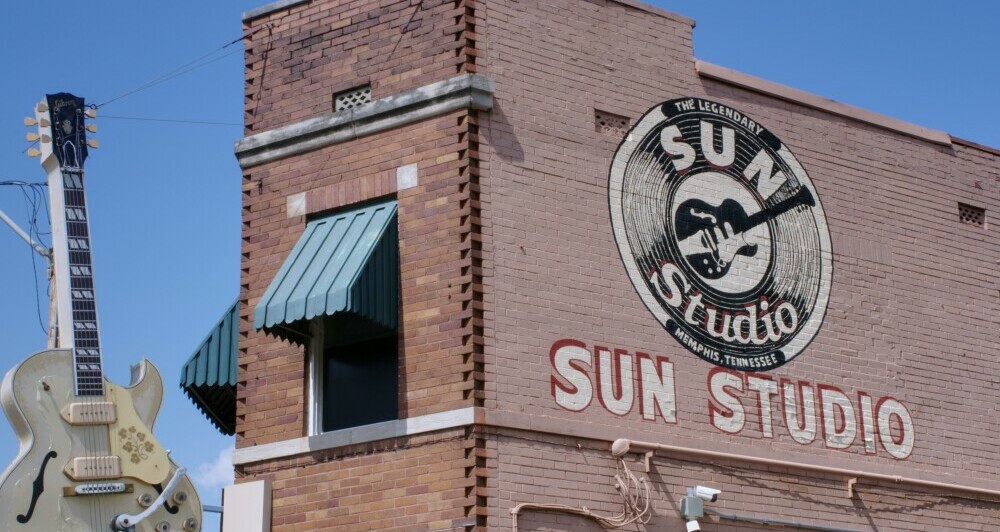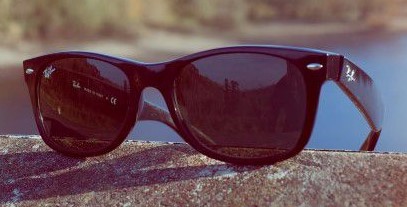How Sam Phillips created Sun Records in Memphis, Tennessee

Before Sun Records, there was Sun Studios. Or rather there was the Memphis Recording Service. This was opened on January 3, 1950, by Phillips at 706 Union Avenue in Memphis, Tennessee. In addition to musical performances, he recorded events such as weddings and funerals, selling the recordings.
What was unique about Sun Records’ approach to finding and fostering new talent
Phillips was not a man looking for the same old tried and trusted. Phillips wanted new, fresh talent producing new, original sounds. USA Today no less, ranks Carl Perkins’ Blue Suede Shoes as the Smells Like Teen Spirit of its day. Nothing like it had been heard before and Perkins soon found himself near the top of the Billboard Hot 100.
How Sun Records Rewrote Musical Boundaries
In 1951, along with his band Kings of Rhythm, Ike Turner was invited to record at Sun Studios (then known as the Memphis Recording Service) by Sam Phillips. Realising that they needed an original song at short notice, saxophonist Jackie Brenston suggested a song about the new Oldsmobile Rocket 88.
Turner worked out the arrangement and a piano introduction whilst Brenston and the rest of the band devised the lyrics. Unfortunately, the finished track was credited to Jackie Branston and his Delta Cats, not Ike Turner and the Kings of Rhythm featuring Jackie Brenston. To add insult to injury Turner received no songwriting credit and the track reached the top ten on the Billboard R&B chart.
Rocket 88 has a good, although not definitive, claim to the title of the first Rock n’ Roll song ever recorded. That is subjective, but objectively, its sales generated enough money for Phillips to form Sun Records.
The range of genres recorded by Sun Records
The city of Memphis was home to a diverse range of musical genres, from gospel through blues to hillbilly, country, boogie, and western swing. Sam Phillips was perfectly placed to take advantage of this range of musical styles. There were no style limitations at the Sun. In one form or another, all were recorded and released to the public.
Popular and iconic: Some hits released by Sun Records
When one first thinks of Sun Records, artists like Elvis Presley, Carl Perkins, Johnny Cash, and Jerry Lee Lewis spring to mind most readily. However, they are not the only artists to record for Sun Records. As we have already learnt, Memphis was a melting pot of musical styles and Sam Phillips was quick to take advantage, recording and releasing material from a wide range of artists.
First single: Flat Tire
The first single released on the Sun Records label, in 1952, was an instrumental called Flat Tire, by a local alto-saxophonist, Johnny London. The only accompaniment London received was from a tenor-saxophonist by the name of Charles Keel with a piano track and drums keeping the song moving. It is perhaps a strange choice by Phillips, but as with a great number of the tracks he chose to release, he certainly showed that he was a risk-taker.
That’s All Right
The first track by Elvis Presley that Phillips released on Sun Records was credited to Elvis Presley, Scotty (Moore) and Bill (Black). That’s All Right was an up-tempo cover of a track by Arthur Crudup that the band were jamming before a recording session in the early days of July 1954. Phillips liked what he was hearing, so he asked them to start again. And there it was, a seminal moment in the history of Rock n’ Roll.
Hey, Porter
In 1955, a young Johnny Cash released his first single, Hey, Porter. The song was conceived in response to Sam Phillips’ request that he and his backing band, The Tennessee Two come up with a fast song instead of the gospel number, I Was There When It Happened, that they had auditioned with.
The song tells the story of an excited young man’s journey home to Tennessee. Throughout the journey, the young man pesters the porter for updates on the journey. Hey, Porter was the first of many rail-themed numbers written and performed by Cash throughout his career.
Blue Suede Shoes
In 1956, Carl Perkins recorded his own composition, Blue Suede Shoes. There are a couple of theories about the song’s origin. Johnny Cash claims that he planted the idea by recounting a story of a black airman by the name of C.V. White, who referred to his military-issue shoes as blue suede shoes.
Perkins himself refers to a story of him playing a dance when he overheard a dancer scold his girlfriend to not step on his ‘suedes’. Perkins noticed that the guy was wearing blue suede shoes and they had a single scuff mark.
Shining Stars of Sun Records: The Story of Legendary Artists
Of course, Sun is probably best known as the label that launched the career of Elvis Presley. However, his appeal soon outgrew the capacity of the label to manage. Consequently, in November 1955, his recording contract was sold to RCA Victor for the princely sum of $35,000.
It is reported that this money enabled, Phillips to launch the careers of Carl Perkins, Jerry Lee Lewis, Roy Orbison and Johnny Cash.
Carl Perkins
Perkins is perhaps best known for being the writer and original performer of Blue Suede Shoes, which he took to number one on the Billboard Country Music chart. He is also responsible for tracks such as Honey Don’t, Matchbox and Everybody’s Trying to Be My Baby.
Sam Phillips rated Perkins the Rocker and wondered if he could act as a catalyst in the melding of country with R&B. Paul McCartney credits him with being a major influence on the Beatles.
Jerry Lee Lewis
Jerry Lee Lewis was signed to Sun Records in 1956 and soon debuted with a cover of the Ray Price track Crazy Arms, which sold 300,000 copies. Lewis’s next track was Whole Lotta Shakin’ Goin’ On (1957), which was followed by Great Balls of Fire (1957), Breathless (1958), Break-Up (1958), I’ll Sail My Ship Alone (1958), Lovin’ Up A Storm (1959), and Sweet Little Sixteen (1959).
In 1958 it was revealed that Lewis had married his thirteen-year-old first cousin, Myra Gale Brown. This led to the collapse of his nascent career in Rock n’ Roll and his departure from Sun Records in 1963.
Roy Orbison
Roy Orbison was born in Texas and his parents gifted him a guitar for his sixth birthday. He soon learned to play the chords to a classic old-style country standard You Areold-style My Sunshine. He was an avid fan of country music and, in particular, Lefty Frizzell.

Orbison was nothing if not precocious and by the age of eight, he was a performer on local radio shows and by thirteen had his own band, The Wink Westerners. After high school, he attended North Texas University where he discovered Rock n’ Roll. After spending just a year at UNT, he moved to Odessa, Texas, where he formed the Teen Kings with James Morrow, Jack Kennelley, Billy Pat Ellis, and Johnny ‘Peanuts’ Wilson.
In 1955 whilst recording a TV show on a local TV station, their performance of the track Ooby Dooby was heard by Johnny Cash, who recommended the band to Sam Phillips. Initially reluctant, Phillips eventually signed the Teen Kings and their newly recorded version of Ooby Dooby was released and reached number 59 on the Billboard Hot 100, selling around two hundred thousand copies.
Soon after the release of the follow-up single, You’re My Baby, b/w Rockhouse, the Teen Kings split and Orbison was retained as a single artist. In all, Orbison spent two rather lacklustre years at Sun Records and he finally left the label after the success of the Everly Brothers recording of his song Claudette which allowed him to buy himself out of his contract with Sun Records.
Despite his relative failure at Sun Records, Roy Orbison was an important artist for the label in general and for Rockabilly music in particular. At Sun Records, he made his impact with his guitar sound rather than his voice with which he would later become famous.
Johnny Cash
Born in Arkansas in 1932, Johnny Cash signed for Sun Records in 1955 after he had moved to Memphis, where he worked as a salesman, whilst at the same time, studying to be a radio announcer. In his spare time, he played with a pair known as the Tennessee Two – guitarist Luther Perkins and bassist Marshall Grant.
Eventually, he visited the Sun Records studio and auditioned for Sam Phillips, singing mostly gospel songs. In a possibly apocryphal story, Phillips told him to “Go home and sin, then come back with a song I can sell.” He eventually won over Phillips and duly signed for the label.
His first recordings at Sun, Hey Porter and Cry Cry Cry, were released in 1955 and met with reasonable success on the country hit parade. They are sung rather than the almost spoken intonation of his later work.
In all, Cash spent three years recording for Sun Records before he left to join Columbia Records. Increasingly disillusionment with his relationship with Phillips was the primary reason for his leaving – for example, Phillips would not allow him to record gospel songs and was paying him a royalty rate of just 3% compared to the standard rate of 5%. Furthermore, Elvis Presley had already left and Phillips was concentrating more and more on the promotion of Jerry Lee Lewis.
Million Dollar Quartet
One night in early December 1956, Elvis Presley dropped in at Sun Studios as Carl Perkins was recording new tracks with Jerry Lee Lewis backing him on piano. Johnny Cash was also in the studio. The four played a spontaneous jam which Phillips recorded.
Opinions vary on whether Cash is present on the recording of the jam. In his autobiography, Cash insists that he was there, singing furthest away from the microphone and in a higher pitch than normal, “to blend in with Elvis.”
Black Artists at Sun Records
Sam Phillips was a big fan of many black artists and they influenced him greatly; in turn, he introduced the world to Presley, Perkins, Cash, Orbison, Lewis and countless other white artists because, in them, he heard musical styles which to the uninitiated sounded like black styles.
In the segregated environment of the time, black and white artists could not feature on the same radio station although they did feature in the same record sales charts. For example, the list of number-one hits on the 1956 Billboard R&B chart features exclusively black artists with one stand-out white face – Elvis Presley.
Howlin’ Wolf
Howlin’ Wolf, or Chester Arthur Burnett, was born in Mississippi in 1910. He began playing at the age of seventeen after buying his first guitar. He was influenced by the great Mississippi bluesman Charley Patton, first by listening to him, then by playing with him.
In turn, Burnett was an influence on the young James Brown during their military service together. By the early 1950s, Burnett had moved to West Memphis, Arkansas where he was heard by Ike Turner who was a freelance talent scout at the time.
In due course, Turner recommended Burnett to Sam Pillips and although he did not record for Sun Records, he did record at Sun Studios, but since it was before Phillips had set up Sun Records, the tracks were released on Chess Records and also on Modern Records.
Burnett was a great influence on Phillips who famously described him as “one of the most interesting people that I worked with.”
B.B. King
Similarly to Howlin’ Wolf, B.B. King was from Mississippi and he found himself recording for Sam Phillips via West Memphis and Ike Turner. Again, he did not record directly for Sun Records, but he was recorded by Phillips at Sun Studios for RPM Records.
How did these artists help Sun Records establish its fame and global credibility?
Like the source of the Nile or the Amazon, the birthplace of Rock n’ Roll is difficult to pin down definitively. Of course, Memphis and more precisely, Sun Records has a great claim. But so too would a place such as Cleveland, Ohio.
What is not up for discussion are the facts; in the case of black artists, Sam Phillips played a part in bringing them to white audiences. As far as white artists, Phillips played a major role in helping them launch their careers.
Sun Records or Sun Studios was the home or origin of musical legends and genres from the 1950s, such as Howlin’ Wolf and B.B. King to Elvis Presley, Carl Perkins, Johnny Cash, Roy Orbison and Jerry Lee Lewis; from Blues and Gospel to Country and Rock n’ Roll, via Rockabilly and many other styles.
The enduring legacy of Sun Records and lessons for today’s music industry
Perhaps of all the styles thrown into and emerging from the Sun Records melting pot, Rockabilly was the prime example of the evolution of the Sun Sound. Lyrically it was bold, provocative even. Musical arrangements were sparse, but they had a driving, insistent quality.
The country music of the period seldom included drums in their orchestration – to the extent that drums were not allowed on stage at the Grand Ole Opry. In contrast, jazz, blues, and jump bands would not have been the same without drums. Rockabilly, which merged country with these forms, used drums to drive American teenagers towards the revolutionary Sun Sound, especially, Rockabilly.
It is perhaps this drum-driven vibrancy that survives to this day in what Sun Records delivered to the world. Sincere, passionate music that has stood the test of time. Music that has reached across race, age, gender and genre boundaries, and reflects the diversity and vision of the talent that is recorded on Sun Records.
What lessons can the modern music industry learn from Sun Records?
Via Sun Records, Sam Phillips, encouraged ‘his’ artists to be the best musician or the best songwriter they could be. With his technical skills, he made sure that who they were came across on their records too. At the time, many labels would channel their artists into making music that was like what was currently popular. Phillips and Sun Records turned that idea around and challenged artists to “Make what’s going to be popular.”
It was all about the future; about exploring current styles and genres and experimenting with them, seeking to find out what they could evolve into. Artists like Johnny Cash and Jerry Lee Lewis were, not just allowed, but encouraged to be themselves. If they’d gone to Columbia, Mercury or RCA Victor, those labels would have been looking at different metrics. E.g., what was on the charts that week?
In many regards, the same is true nowadays. It sounds obvious, but major labels want to make a profit so they don’t necessarily like risk. They’re not always looking for what’s next. They’re on the lookout for what’s going to sell now.
Established artists are allowed to take certain, quantified risks precisely because they are established. New artists are not allowed that leeway. Consequently, we don’t get to hear a lot of potentially great artists. That’s where indie labels, following the trail blazed by Sun Records, have picked up the slack. They provide a place for artists who want to stay true to themselves. That is the true legacy of Sam Phillips and Sun Records.

Simon, I love your article! What a great history lesson about Sun records and the recording industry in general. I’m always sucked in to the ‘behind the curtain’ stories that don’t get publicized and your article gives quite a few.
I also like your perspective at the end. From where you told us that ‘drums were not allowed on stage at the Grand Ole Opry’, and the musicians at Sun were encouraged to ‘Make what’s going to be popular.’ That’s the kind of thinking that greatness is born from, in any industry – just wonderful stuff here.
Thanks for the great read!
Thank you for your comment, Jake. I’m always intrigued by these backstories as they always give a great insight into how develop over time. They are always a real, “Well, I never knew that,” moment. Take drums in country music. They were not allowed at the Grand Old Opry until 1967 because they were considered “too loud” and “not pure.”
Simon